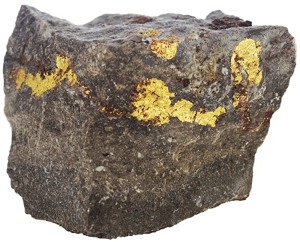Tavex uses cookies to ensure website functionality and improve your user experience. Collecting data from cookies helps us provide the best experience for you, keeps your account secure and allows us to personalise advert content. You can find out more in our cookie policy.
Please select what cookies you allow us to use
Cookies are small files of letters and digits downloaded and saved on your computer or another device (for instance, a mobile phone, a tablet) and saved in your browser while you visit a website. They can be used to track the pages you visit on the website, save the information you enter or remember your preferences such as language settings as long as you’re browsing the website.
| Cookie name | Cookie description | Cookie duration |
|---|---|---|
| tavex_cookie_consent | Stores cookie consent options selected | 60 weeks |
| tavex_customer | Tavex customer ID | 30 days |
| wp-wpml_current_language | Stores selected language | 1 day |
| AWSALB | AWS ALB sticky session cookie | 6 days |
| AWSALBCORS | AWS ALB sticky session cookie | 6 days |
| NO_CACHE | Used to disable page caching | 1 day |
| PHPSESSID | Identifier for PHP session | Session |
| latest_news | Helps to keep notifications relevant by storing the latest news shown | 29 days |
| latest_news_flash | Helps to keep notifications relevant by storing the latest news shown | 29 days |
| tavex_recently_viewed_products | List of recently viewed products | 1 day |
| tavex_compare_amount | Number of items in product comparison view | 1 day |
| Cookie name | Cookie description | Cookie duration |
|---|---|---|
| chart-widget-tab-*-*-* | Remembers last chart options (i.e currency, time period, etc) | 29 days |
| archive_layout | Stores selected product layout on category pages | 1 day |
| Cookie name | Cookie description | Cookie duration |
|---|---|---|
| cartstack.com-* | Used for tracking abandoned shopping carts | 1 year |
| _omappvp | Used by OptinMonster for determining new vs. returning visitors. Expires in 11 years | 11 years |
| _omappvs | Used by OptinMonster for determining when a new visitor becomes a returning visitor | Session |
| om* | Used by OptinMonster to track interactions with campaigns | Persistent |
| Cookie name | Cookie description | Cookie duration |
|---|---|---|
| _ga | Used to distinguish users | 2 years |
| _gid | Used to distinguish users | 24 hours |
| _ga_* | Used to persist session state | 2 years |
| _gac_* | Contains campaign related information | 90 days |
| _gat_gtag_* | Used to throttle request rate | 1 minute |
| _fbc | Facebook advertisement cookie | 2 years |
| _fbp | Facebook cookie for distinguishing unique users | 2 years |
The Formation of Gold Bullion Bars: From Mining to Minting

Gold bullion bars are more than just a financial asset; they represent history, craftsmanship, and a fascinating transformation process.
But have you ever wondered how raw gold is transformed into gold bars. In this article, we’ll take an in-depth look at the entire formation process of gold bullion bars, from the gold mines to the minting of the final product.
History of Gold and its Importance

Gold has been a symbol of wealth and power for centuries
Egyptians and Romans, revered gold for its beauty and rarity, among other cultures.
Gold was not just a currency; it was a way to demonstrate authority and status. Today, gold bullion bars still carry that same significance, both as a form of investment and a symbol of financial security.
Where Does Gold Come From?

Gold is a naturally occurring metal found in the earth’s crust. It’s often located in areas with volcanic activity or in riverbeds where erosion has occurred.
The most prominent gold mining regions in the world include South Africa, Russia, and Australia. In these areas, vast operations dig deep into the ground or sift through riverbeds to extract this precious metal.
Types of Gold Deposits
Gold can be found in two primary forms:
- Lode Deposits: Found within rock formations, often requiring large-scale mining operations.
- Placer Deposits: Found in riverbeds where gold has been naturally eroded from larger deposits.
Extracting Gold from the Earth

The process of extracting gold is labor-intensive and complex. After identifying a gold deposit, miners use various techniques to bring the metal to the surface.
The Gold Mining Process
Gold mining begins with exploring potential sites, drilling into the earth, and conducting assays to determine the quantity and quality of the gold. If the results are promising, full-scale mining operations commence.
Methods of Gold Extraction
If the tests show promising results, full-scale mining operations will start. Gold can be mined using various techniques, each suited to different types of deposits.
- Hard Rock Mining: This method involves drilling into solid rock formations to reach the gold deposits. It’s one of the most labor-intensive methods and often requires the use of explosives and heavy machinery to break up the rock before the gold can be extracted.
- Placer Mining: This technique involves the use of water to separate gold from sand and gravel. The gold settles at the bottom because of its density, and miners use sluices, pans, or dredges to collect it. Placer mining is often associated with historic gold rushes, but it’s still used today in certain regions.
- By-product Mining: In some cases, gold is not the primary focus of the mining operation but is recovered as a by-product while mining for other metals, such as copper or silver.
Processing the Extracted Gold
Once gold ore is extracted, it goes through several stages to separate the gold from other minerals.
The ore is crushed and ground into fine particles to make the gold easier to extract.
Concentration Methods
There are different methods to concentrate gold:
- Gravity Concentration: Since gold is much denser than other materials, it can be separated through gravity-based methods like sluices or shaking tables.
- Flotation: In this chemical process, gold is attached to bubbles and floated to the surface, where it is collected. This method is often used for complex ores with multiple metals.
Refining Gold

After gold is extracted, it undergoes a refining process to purify it to the highest standards. In gold bullions case this needs to be 99.99% pure.
Gold is heated at extremely high temperatures to remove impurities. This process results in what is known as doré bars, which are then further refined to reach higher purity levels.
The Importance of Purity
For gold bullion bars, purity is paramount.
Most gold bars are at least 99.5% pure, with some reaching as high as 99.99%
The higher the purity, the more valuable the bar, which is why precise refining processes are crucial.
High-purity bars are especially desirable for investment purposes, as their value is directly linked to their gold content. Those who wish to include gold into their investment portfolio should consider only buying gold bullion which consists of 24 karat 999.9 pure gold, as this retains its value among dealers over the long term.
The Minting Process: Crafting Bullion Bars

Once gold has been refined, it’s ready to be cast into bullion bars
Molten gold is poured into moulds and left to cool, forming solid bars. Each bar is weighed to ensure it meets specific standards, then stamped with information such as its weight, purity, and a unique serial number. These marks provide crucial information for investors and traders, ensuring authenticity and traceability.
Bars are then polished and marked with their weight, purity, and a unique serial number, ensuring their authenticity.
Standardisation and Weight Classifications

Gold bullion bars come in a variety of sizes, from 1 gram to 400 ounces. The most common size for investment purposes is the 1-kilogram bar.
Each bar is stamped with important information such as its purity, weight, and mint mark. This helps to verify its authenticity and traceability.
Uses of Gold Bullion Bars

While gold bullion bars are primarily seen as an investment vehicle, they also have a variety of industrial applications due to gold’s unique properties.
Investment and Wealth Preservation
Gold bullion bars are widely considered one of the safest investments available. Unlike stocks or real estate, which can fluctuate wildly in value, gold tends to hold its worth during periods of economic uncertainty, making it a popular choice for wealth preservation.
Industrial Uses
Gold is an excellent conductor of electricity and highly resistant to corrosion, making it invaluable in electronics and aerospace technology. It’s also used in medical devices and even dental work, though these industries typically use smaller quantities of gold than the jewelry or investment sectors.
Gold’s Role in the Global Economy

Gold plays a crucial role in the global economy, acting as both a commodity and a safe-haven asset. Central banks hold vast reserves of gold to back their currencies and stabilise their economies during times of financial instability.
Gold as a Safe-Haven Asset
During times of political or economic uncertainty, investors often flock to gold as a safe-haven asset
Unlike currencies, which can be devalued or affected by inflation, gold has intrinsic value that remains stable over time. This makes it a reliable store of wealth, particularly during periods of market volatility.
Environmental and Ethical Considerations in Gold Production
Gold mining can have significant environmental and ethical impacts. Large-scale mining operations often result in habitat destruction, water contamination, and significant carbon emissions. However, growing awareness of these issues has led to a push for more sustainable and ethical mining practices.
Ethical Gold Sourcing
Many buyers now opt for ethically sourced gold, ensuring that the metal is extracted in a way that minimises environmental damage and provides fair wages to miners. This trend is especially important for consumers who want to ensure their investments align with their values.
Future of Gold Bullion Bars
As technology continues to evolve, new forms of gold investment are emerging. Digital gold, where ownership of physical gold is represented by digital certificates, is becoming increasingly popular among tech-savvy investors.
However, many still prefer the tangible nature of physical gold bullion bars, which provide a sense of security that digital assets cannot replicate.
Cryptocurrencies like Bitcoin have sparked debates about digital gold. However, many still prefer the tangible nature of physical gold.
Conclusion
Gold bullion bars have a rich history and are highly valued for their purity, weight, and security. From the mining process to the final product, gold’s journey is one of labor, precision, and dedication.


















